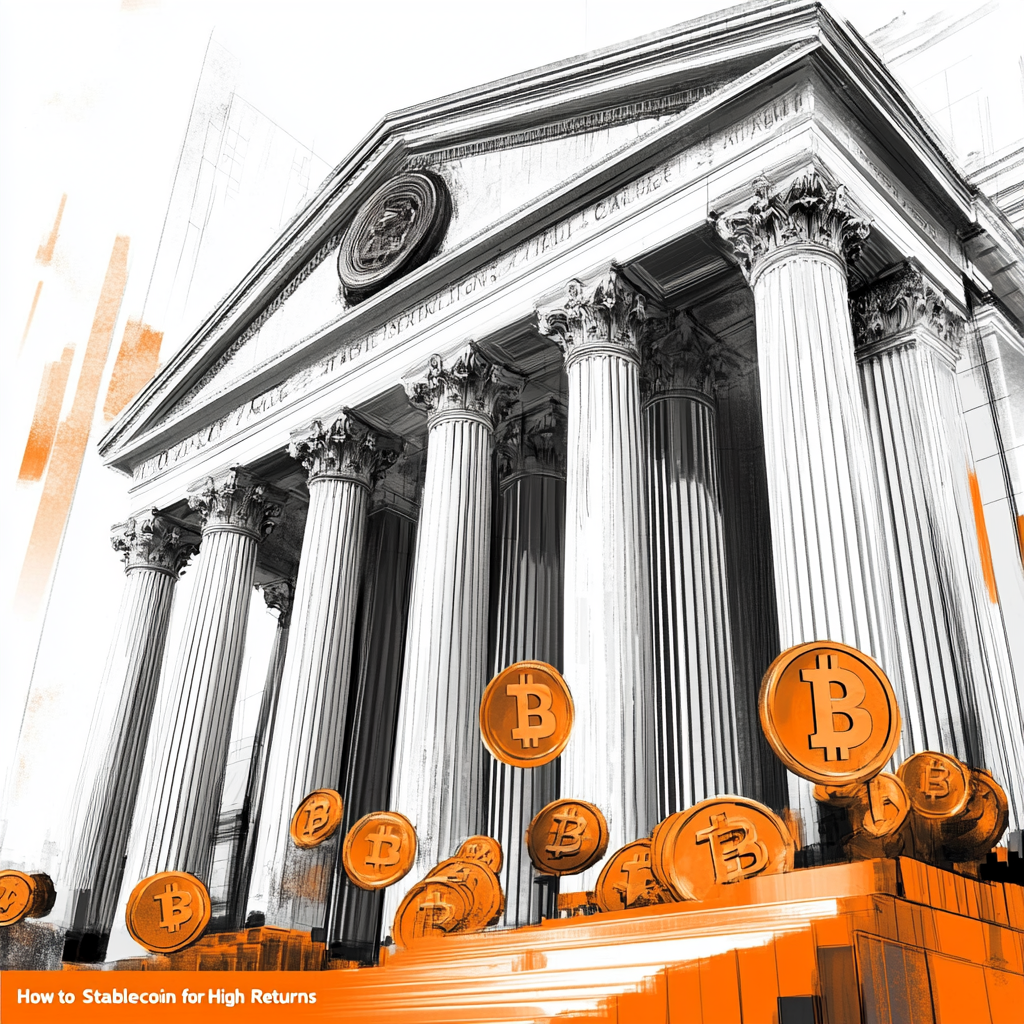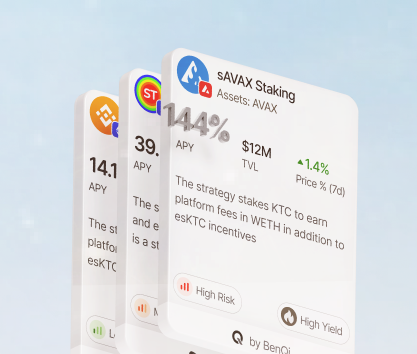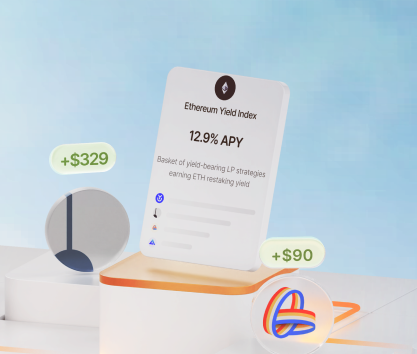The modern landscape of the DeFi sector is reminiscent of any mountainous terrain with its many protocols offering different levels and types of services. In 2024, you can find a plethora of interesting places to park capital. When it comes to maximizing profitability, using stablecoins in yield farming pools can be a good strategy since these assets have stable prices and are often in demand by various protocols.
We are going to discuss some options that will work for investors. Interested in stablecoins, consistent yield farming returns, and relatively safe investment strategies in the DeFi ecosystem. Note that we do not endorse any of the platforms mentioned below and encourage all readers to do their own research and make decisions based on careful analysis of all publicly available sources of information.
Yield farming with stablecoins
This particular strategy appears to be quite simple yet there is a lot to learn if you do not have any prior experience with the DeFi sector. The basic concept can be summarized as follows:
- A DEX needs stablecoins like USDT, USDC, and DAI to facilitate trading as many investors prefer the stability of coins pegged to fiat currencies as they offer a strong point of reference tightly connected to the world of tradfi. Additionally, stablecoins do not have some downsides associated with speculative crypto assets like the risk of impermanent loss and market volatility. However, some tokens may fluctuate against the currency they are pegged to usually within less than 1%.
- To obtain stablecoins and ensure smooth asset transition between traders, DEXes offer very high interest rates usually referred to as base APY. These are often offered on two-sided pools with interest paid on both types of holdings in different proportions depending on the design of the pool and its smart contracts. In some cases, DEXes also offer rewards in native, governance, or layer 2 tokens to incentivize users to contribute to pools.
- Rewards structures are based on a variety of factors like market conditions, tokenomics, periodicity, and more. Note that reward tokens are usually speculative assets vulnerable to inflation. Many tokens lose value over time due to unlimited emission and the sell-off by investors who want to exit their positions and liquidate rewards.
Many yield farming strategies are based on timing exits and selling tokens while they have value. In some cases, holding on to rewards or using them for utility can be a better approach. For example, Pendle users, who decided to invest in USDe pools with timed maturation, were earning up to 8.99% base APY and 9.28% in PENDLE rewards. This token is one the best gainers in 2024 with a massive 592% growth since launching. On the other hand, people who decided to invest in the USDT pool on Nostra Money in exchange for STRK rewards received 11% reward APY on average but the token lost close to 80% within 7 months.
Evaluating potential returns and real earnings is one of the biggest challenges for DeFi investors. Researching reward tokens, their utility, and protocols together with underlying chains is crucial for the long-term success of your investment activities. When it comes to using stablecoins, the variety of options may seem overwhelming at first. However, it becomes relatively easy to identify good investment opportunities after researching the sector for a while.
Stablecoin yield farming risks and rewards
The vast majority of investors are interested in preserving their wealth more so than increasing it. However, the paradigm shifts if you move to the lower end of the spectrum where people with limited capital are willing to take on higher risk to magnify potential returns. Regardless of where you land on this spectrum, it is possible to find suitable investment options in the DeFi ecosystem since it has incredibly dangerous yet rewarding strategies.
Let’s talk about some interesting setups with varying levels of risk:
- Liquid staking can be an interesting and very dangerous gateway to stablecoin yield farming as you will expose the portfolio to several risks at once. A perfect example will be using DAI in the DSR module (DAI Savings Rate) on MakerDAO at 6% APY and using it as collateral on Aave at 5.57% borrow APY to get USDC that can be staked on Compound for up to 5.48% base APY and 0.31% in rewards bring the total to 6.22% mixed APY with a potential to earn more under favorable market conditions. Alternatively, you can simply stake sDAI on Spark for 6.25%. Note that sDAI is not as popular as many other staked tokens. We use it just as an example of how liquid staking setups can be used in yield farming. The risk level here is moderate.
- You can significantly reduce portfolio exposure by investing in high-TVL pools on time-tested protocols like Convex Finance, Curve DEX, or Merkl. These yield farming strategies have the lowest risk. Pools with relatively low risk levels are available on many protocols. For instance, you can go to PanCakeSwap (Binance Smart Chain) and invest in the two-sided USDC-USDT pool to earn up to 0.5% in base APY and 4.28% in CAKE rewards. With a TVL over $22 million, it is a rather safe investment opportunity. On the other hand, you may search for even more flexible pools on protocols with strong track records. Curve DEX allows investors to contribute to the DAI-USDC-USDT pool that has a 0.63% base APY and 0.58% CRV APY. 30-day averages vary and may impress you under certain market conditions.
- Extremely high-risk investments rarely pay off like in the most recent case with HMSTR which turned out to be one of the biggest and most overhyped projects in 2024. However, many other options with similar potential offer crypto enthusiasts a way to risk everything they have hoping to earn a life-changing amount of money. We strongly discourage our readers from attempting to invest in memecoins and obvious degen farms. On the other hand, there is no harm in discussing some of the pools with exorbitant APYs. Some investors may gravitate toward projects like ApeSwam AMM where the STLOS-USDC pool has a 4657% APY and a TVL of just over $30K. BabyDogeSwap, a DEX on BSC, offers 4709% in rewards on USDT-WBNB investments in a pool with a low TVL of $10K.
Regardless of which risk style you find attractive, the DeFi sector has something to offer. However, you should be looking for reliable liquidity pools on protocols that offer a useful service to the community and have the potential to grow into something bigger in the future. For example, Curve DEX is still growing and offers cheap swaps across 8 different chains including Polygon, Ethereum, Arbitrum, and many others. It is a good choice for investors looking for trustworthy protocols in the DeFi ecosystem.
There are many ways to design a stablecoin. Currently, three distinctly different approaches are used in the DeFi sector but they are just the tip of the iceberg with some protocols experimenting with exotic designs that may prove to be viable. Since the type of stablecoin defines its usability and utilization in the market, returns can differ greatly.
Here are these three types of stablecoins:
- Fiat-backed coins like USDT and USDC are pegged to the US dollar with the parity maintained through reserves that ensure that all USDT coins can be exchanged to fiat US dollars at a 1:1 ratio when requested by users. Many other tokens have similar designs and many consider them to be the golden standard for the industry since they appear to be the safest and most stable. These tokens are in constant demand. For instance, USDC is currently the most dominant token in the DeFi sector with many protocols offering huge returns on USDC holdings. For example, Goldlink, a leveraged broker on Arbitrum, is offering 8.35% base APY and up to 20% in ARB/USDC rewards to investors. As of October 2024, the TVL is just above $1 million and many users are expecting a generous airdrop in the near future.
- Crypto-backed stablecoins are some of the oldest in the sector. Some examples are DAI from MakerDAO and the more recent GHO from Aave. These tokens are pegged to the US dollar with the parity maintained through reserves in various tokens. GHO is overcollateralized (245%) and uses strictly Ethereum assets like ETH and stETH. Another example is USDe, a token gaining popularity among decentralized apps. It is a synthetic USD supported by LTS (stETH, wETH, etc.) and Ethereum. Staking GHO in the single-sided pool on the lending protocol Sturdy yields 1.71% in base APY and up to 53% in STRDY rewards. GHO can be used for yield farming on Aura, Convex Finance, Balancer, Curve DEX, and other popular protocols.
- Algorithmic stablecoins are still a thing despite the catastrophic collapse of the Terra Luna network. As the name suggests, special algorithms ensure that the token and its liquidity are maintained at certain levels to achieve parity with a reference asset. Several such digital assets deserve your attention. USDX by Kava and USDD. These tokens are used in a variety of pools. For example, you can invest in the two-sided USDe-USDX pool on Curve DEX to receive a sizeable 36.6% CRV reward APY or focus on the single-sided pool on the Clearpool Lending protocol with a 4.27% in rewards and 3.75% in base APY. Pool TVLs are $1.57 million and $15.87 million respectively. USDD is popular on JustLend with its $163 million TVL pool and on some Dapps within the Ethereum ecosystem. You can invest in the USDD-3CRV pool on Curve for 2.65% in CRV rewards.
Many protocols are leveraging blockchain technology to deliver unique stablecoin designs. Unfortunately, not all of them are destined to become hugely popular assets adopted by millions. For example, USDD is struggling to get off the ground while GHO is doing fine but the adoption rate is still too slow to catch up to the giants of the industry like DAI or USDC. On the other hand, some DEXes are trying to increase the popularity of these tokens and offer generous rewards to investors who are willing to work with them.
Stablecoin yield farming income and risks
Achieving consistent profitability is quite challenging even for experienced investors with years of trading under their belts. When it comes to yield farming, many smart investors know that making money here is often about timing the market. The big advantage of using stablecoins is that you don’t have to worry about the value of the underlying asset which is often tied to macroeconomic factors that affect the reference asset. In a sense, you simply remove some risks associated with cryptocurrencies from the equation and take on risks associated with the fiat economy.
While risks seem to be lower, you still have to deal with some inadequacies and inefficiencies of the DeFi sector. Some of them are below:
- Issues with smart contract safety. All decentralized apps use smart contracts to automate interactions between users. These tiny programs ensure that users can deposit assets into pools and receive an appropriate amount of assets in exchange. Smart contracts also automatically calculate APYs, rewards that must be paid, and many other factors. The smallest of errors in the code can lead to critical vulnerabilities thus many protocols like MakerDAO are offering up to $10 million to professionals who find such bugs.
- Stablecoin de-pegging. It is possible for a stablecoin to start rapidly losing value against the reference asset. It happens unexpectedly with algorithmic coins like it happened to Terra Luna in 2022 when over $45 billion was wiped out in a matter of days. While stablecoins that are backed by fiat or cryptocurrencies have lower chances of experiencing the same fate, volatility is not completely out of the picture. There is always a threat of something going wrong with the stablecoin itself.
- The lack of regulation and compliance in the DeFi sector. Whatever crypto enthusiasts are telling you inside various echo chambers, complete decentralization and anonymity are some of the most impactful factors that hold back adoption. The absence of consumer protection and ways to identify scammers if they are smart about moving around assets act as demoralizing and scary aspects of the decentralized economy where investors are in charge of their assets and have to take full responsibility for their safety.
- Low liquidity is another potential problem for investors who want to time their exits and liquidate reward tokens as quickly as possible when the time is right. Many tokens don’t have deep enough liquidity to allow investors with larger capital to quickly exit their positions. It is important to analyze the tokenomics, price action dynamics, and trading volumes to have a good grasp of when and how quickly one can exit the market.
Among other risks, we have to mention impermanent loss, reward token volatility, floating APYs that change depending on market conditions, and many other little things that can affect the outcome of your investment activities.
The main takeaway
Yield farming with stablecoins can be a profitable endeavor for some investors who have a good understanding of the DeFi sector and can think without clouding their minds with dreams of exorbitant returns. With nearly all protocols offering their investors a way to stake stablecoins in exchange for rewards, you will be able to find a plethora of interesting capital allocation options that can make you rich!









